Enigma Tamer: Mavis Beity (Lever), Margaret Rock
Cryptography, cipher machines, agencies, spy things ... and after all, ordinary, but unusual people were and are behind it all. Who are they and how did their fate, for what and for what purpose did they devote their lives to a difficult task - “cryptography”.
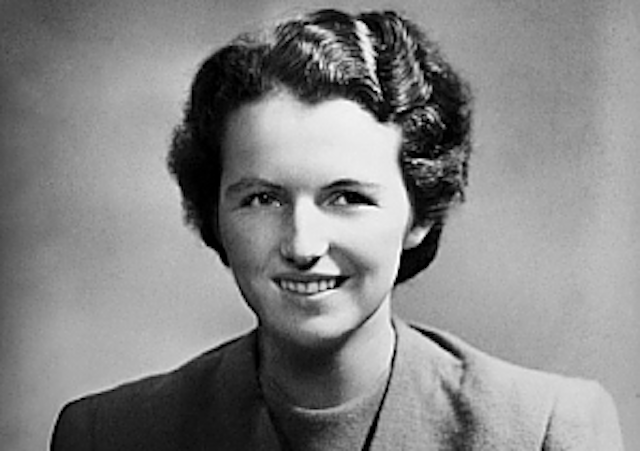
In the famous secret Bletchley Park (British decoding center, famous for the discoveries of Alan Turing) worked a lot of women. The most famous of them were Joan Clark, Mavis Beity and Margaret Rock. The exploits and women's fates of these ladies are no less interesting than the secrets they have learned. Mavis Bayti (May 5, 1921 - November 12, 2013) was a British code cracker during the Second World War. She worked in the Knox intelligence service (ISK) in Bletchley Park (BP). Her name is associated with the successful operation of hacking the German encryption machine Enigma G, and the success of the day, which went down in history as "D-Day".
Mavis Lever was born on May 5, 1921 in Dulwich (UK), the daughter of a postal worker and a seamstress. She grew up in Norbury and Croydon (in the south of Greater London, 15.3 km from Charing Cross), here she attended a school for girls at a monastery (Coloma Convent girl's school). At the beginning of World War II, Mavis studied German at a university college (London).
In 1940, she was selected to work in the subdivision of the Government School of Codes and Ciphers (English Government Code and Cypher School, GC & CS), later - the Center for Government Communications (English Government Communications Headquarters, GCHQ).
Initially, the girl worked in London, here she checked the encrypted message in the "Times" ad section. After taking the oath of allegiance to the service, she was selected to work in the research unit. At that time, he was headed by Dilly Knox at Bletchley Park (BP). Dilly Knox led the “Italian” section of the English Interpretation Center at BP. At the beginning of the Second World War, Dilly was 55 years old, an erudite man belonged to the cryptanalysts of the old school. In 1917, he managed to crack the German naval code: he noticed that the EN digram met five times in a 70-letter coded message, suggesting that the message contains an excerpt from the poem. Knox found a poem by Schiller, from which this passage was borrowed. It was a success. In addition to his sharp mind, he was eccentric:
Knox's weakness was women, especially young and pretty, he loved to surround himself with beauty. Well, Mavis Lever, who entered the service at BP from the University of London, has become the favorite of this genius. There were bad rumors about her: the girl helped the Jewish refugees from Germany find refuge in England, by the way, two such refugees were actually German spies. This fact did not worry Knox much, and Mavis successfully occupied the ranks of Bletchley Park employees.
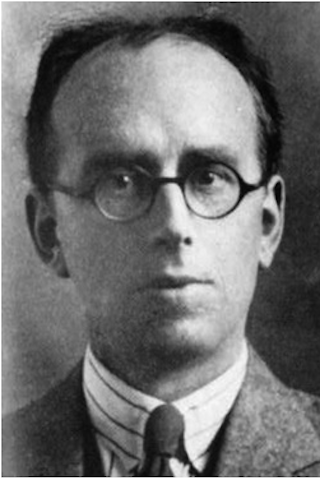
Dilly Knox (July 23, 1884 - February 27, 1943)
An interesting girl who was fond of literature with lyric poetry, attracted Knox despite significant age difference. And although their relationship always remained platonic - they were close to each other, mutual understanding and respect reigned between them.
She was only 19 years old when she first crossed the threshold of Bletchley Park (BP). Shortly thereafter, in March 1941, her career path was crowned with tremendous success: she cracked the Italian naval Enigma. With the help of the “fittings”, the girl managed to guess a few letters that were later put into the phrase: PERSONALE PER SIGNOR, this allowed Lever to understand the order of the disks in Enigma and, accordingly, to crack the one-time key to it. About the reinforcement method:
With the help of “fixtures”, cryptoanalysts first determined the order of the disks, and then their initial state, which allowed reading all the messages intercepted in 24 hours. It was vital to victory in the battle of Cape Matapan.
However, her most important job was to participate in the hacking of Enigma G. A special version of Enigma, which was used by the German Abwehr and was considered indestructible. At first glance, the Enigma G looked the same as the Enigma D: the same dimensions, four coding wheels, and shiny metal parts. The extreme right three wheels are coding wheels, one reflector on the left. The reflector moved during encryption, a counter was set to the left of the wheels (Zählwerk).
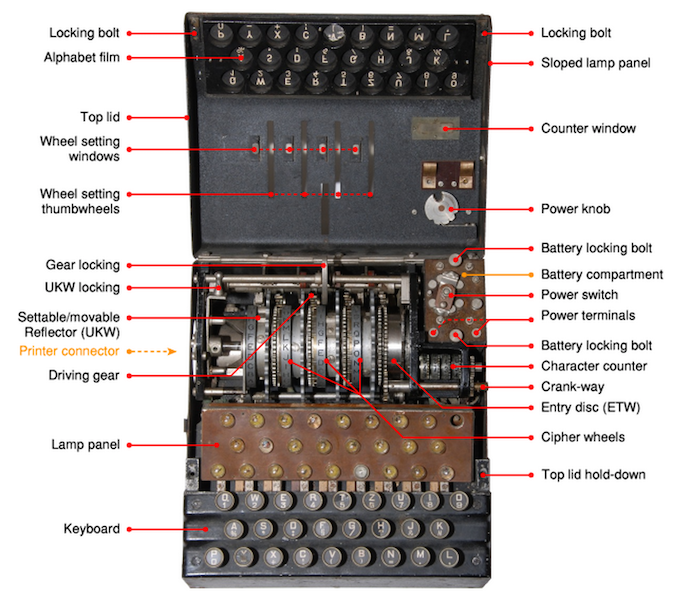
Mavis Lever and another girl, Margaret Rock, were able to reconstruct a modification of the Enigma, which was used by the German military intelligence (Abwehr). In early December, they managed to read the first Abwehr encryption, after which many others followed. It was possible to recruit German spies, with the help of which a radio game was conducted in the interests of the British counterintelligence. The read encryption allowed to accurately assess the progress of operations.
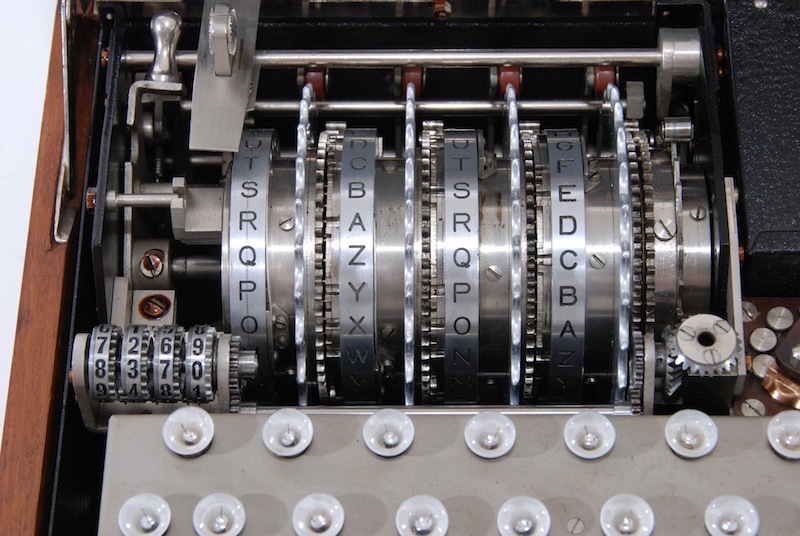
In Bletchley Park, Mavis met her future husband, Keita Beity, a mathematician from section number 6. They got married during the war. November 12, 2013 Mavis died at the age of 92 years after a long and interesting life. Her husband Kate, with whom they had three children, died in 2010 at the age of 91.
In 1937, Dilly Knox hacked into the commercial version of Enigma, and in 1939 he was one of those who were the driving force in the creation and formation of Bletchley Park. By the time Mavis joined the BP, the “code thieves” of the Hut 6 section had already read the ciphers of the German army and air force.
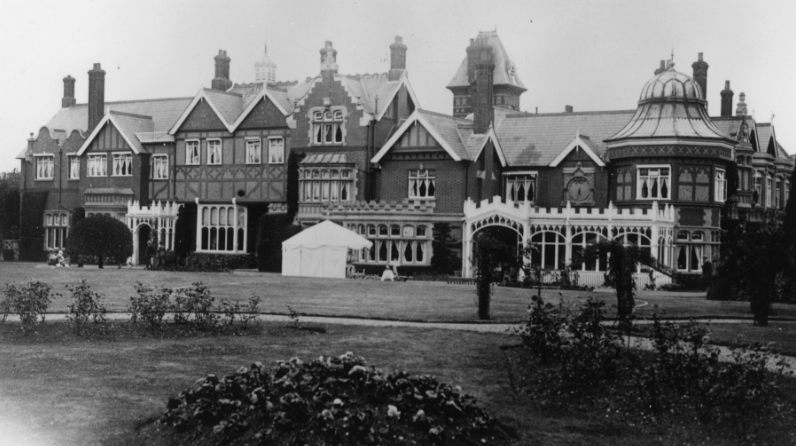
19-year-old Mavis first met Knox, eccentric and absent-minded, the first thing she heard was: “Oh, hi, are we breaking into cars, do you have a pencil?” That's all. She was never told what to do, how to do it, everything needed to learn by herself. In principle, this is how it worked in Bletchley. Lever learned to disassemble the erratic notes of her boss, which he made with the help of an unsubaid pencil. At the same time, the girl realized that she could learn a lot from her mentor Knox. Do not forget that at the same time in the BP Alan Turing worked on hacking Enigma.
The first task of the girl was the work on hacking the Italian Enigma code. In March 1941, Mavis managed to hack the system, after the German operator made a critical error when sending a test message. I would like to note that, in comparison with the German Enigma, the Italian version did not use a patch panel, and therefore it was necessary for the British to go through considerably fewer options to break it up and find key installations in the Bletchley Park. True, the Italian Enigma was used much less frequently than its German sister, respectively, and the number of intercepted encryption was much lower.
When Mavis worked on the test messages, she noticed that they did not contain a single letter "L". Mavis suggested that the message text was originally (before encryption) consisted of some letters L. As a result, it was possible to understand what was the purpose of the enemy operation. This helped the British naval sailors to win a historic victory over the Italians in the Mediterranean. Through the sharp mind of Mavis, her mentor Dilly Knox was noticed and received thanks:
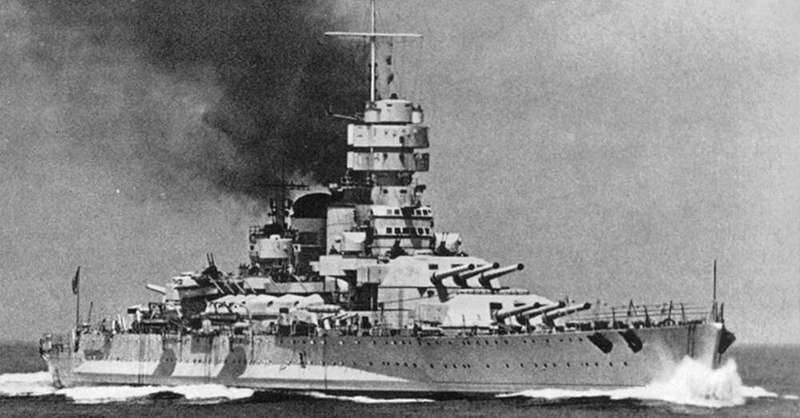
The naval battle, held in the period March 27-29, 1941. The Germans (March 1941) began intensively preparing for the invasion of Greece. To succeed in this operation, the Italian fleet was required to strike at British shipping between Egypt and Greece. Such strikes would put the British to supply their troops. It was possible to save and foresee all actions only thanks to the enhanced intelligence work.
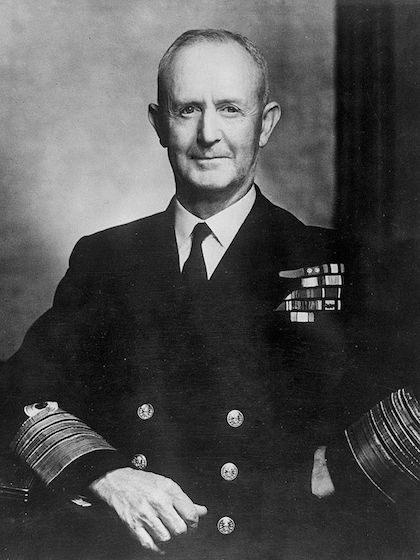
Andrew Cunningham
Apparently, the Italians sent detailed reports of a planned attack on a convoy of the Royal Navy carrying cargo from Cairo to Greece. The reports provided accurate information on the number of ships and submarines involved, as well as the full schedule and dates. The British managed to intercept the secret information, thanks to the work of the BP and its "workers", among whom was Mavis Lever. The information was sent to the Admiralty in London, and transferred to Admiral Andrew Cunningham, commander of the Royal Navy. He was responsible for the Mediterranean fleet. In World War II, he was one of the most famous naval commanders of the British Navy, commanded battles against the Italian and German forces, won more than one naval battle, which became a key one. He was "a wise, strong, many beloved sea wolf, supreme commander of the naval forces."
Andrew Cunningham even wrote a letter of gratitude to Knox: “Tell Dilly that we have won a major victory in the Mediterranean, and we owe this victory exclusively to him and his girls.” After the victory at Cape Matapan, Cunningham personally visited Bletchley Park to thank for the assistance of Knox and his team of girls, code crackers. The girls, besides being devoted to the service, were also considered a mischievous character. In the admiral's arrival, they played a cruel joke with him: he was dressed in impeccable white sea uniform, the girls surrounded Cunningham and forced him to take a few steps back, he pressed his back to the newly painted wall ... After that, they celebrated the meeting in a local pub.
More interesting ... Hacking Enigma G is considered the most significant contribution of Mavis Lever to the course of military operations, and the history of cryptography in general. As already mentioned, Enigma G was a special version of the Enigma encryption machine, used by the German secret service, the Abwehr. She was considered indestructible. Mavis Lever and Margaret Rock - was in the service of Knox - were able to reconstruct the modification of Enigma, which was used in the German military intelligence Abwehr (military intelligence and counterintelligence organ of the Weimar Republic and the Third Reich). They managed to read the Abwehr encryption, followed by others. As a result, a couple of German spies were recruited, they were forced to work on the side of the British counterintelligence, as a result, double agents greatly facilitated the process of reading the ciphers, now it was easy to evaluate the course of the operation by the Germans.
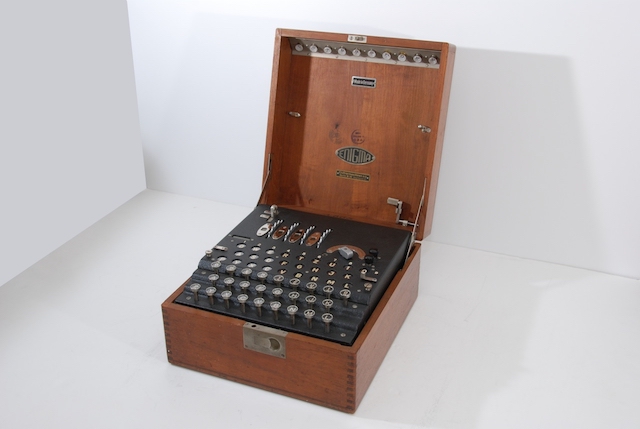
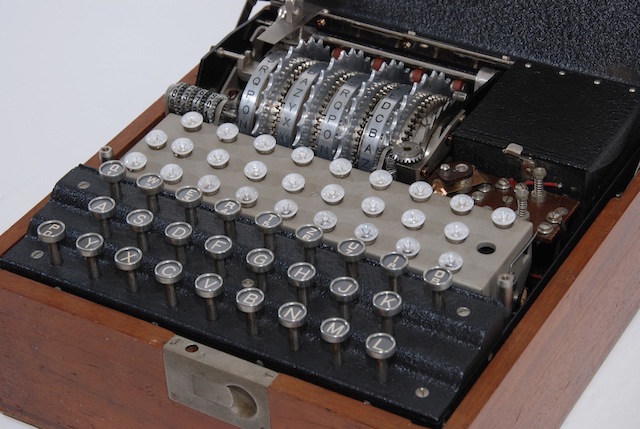
It should be mentioned that during the Second World War the Germans had spies in a number of capitals, including London. After MI5 and MI6 captured most of the spies in the UK and in the neutral capitals of Madrid and Lisbon, they successfully recruited them, and through such double agents gave false information to opponents. Such an operation is known in history as the Double-Cross (XX) system.

Enigma G was known as the 11-15-17 car. Knox and his assistants were faced with the task of hacking into Enigma G. On December 8, 1941, Mavis managed to hack a message from the Abwehr during a connection between Belgrade and Madrid. Within a few days, Mavis managed to break into another Abwehr cryptomachine, the so-called GGG. This allowed them to read high level messages. As a result, the message was deciphered and it was possible to find out the details of the upcoming Allied invasion of Pas-de-Calais. Two armored divisions were retained in the area of Calais.

Chet Beyti
Mavis met her future husband in Bletchley Park and married him during the war. One night she worked alone on the evening shift, faced with a difficult problem that she could not solve herself, turned for help to the mathematicians from Hut 6. At the shift, expert Kate Bayty was on duty. Life in Bletchley proceeded "closed"; employees followed instructions in everything, even in communication with people from other departments, had no right to discuss their work. Nevertheless, Dilly did not forbid his subordinates to seek help in solving some problems with other departments of Bletchley Park.
Kate Bayty (July 4, 1919 - August 28, 2010) was a British code hacker during World War II. He worked at Bletchley Park on Hut 6, then on Intelligence Services Knox (ISK). He graduated from college at Cambridge, studied mathematics, met a student of mathematics Gordon Welchman there. Gordon Welchman, a British (later American) mathematician and cryptanalyst, led the department at Bletchley Park during World War II. Kate was recruited by him in 1940. In 1943, Keith Batey managed to crack the Enigma ciphers, as well as the ciphers of the Italian military attaches in Berlin. Unlike his wife Mavis, Kate was silent, and he did not particularly talk about her work in wartime in Bletchley.

The joint solution of the problem was the beginning of the romantic story of the Beitas, 70 years long. Mathematician from section number 6 and subordinate Knox, and their life began one for two. Although initially Knox was jealous of the girl for her passion, and tried to ward off her from Beity. But after I realized that Mavis was seriously passionate about the young man, he quit trying to separate them. In November 1942, Mavis and Kate were married. "Chef" Knox even made a pair of chic wedding gift.
In 1967, Kate Beytie became the chief financial officer of Oxford University, the couple lived on the Nuneham Park university estate. After the war, Mavis became the author of many books.
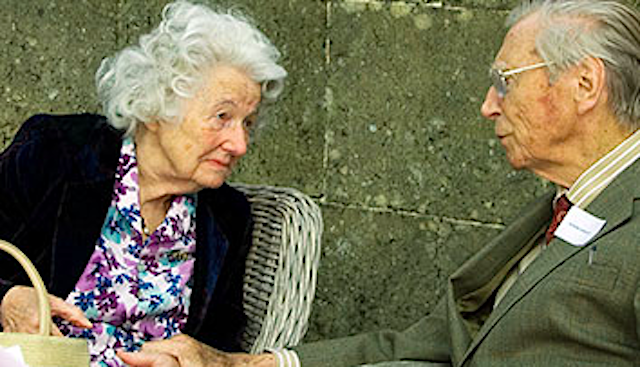
Work at Bletchley Park was classified. For more than 30 years, she and her husband Kate never talked about their work in wartime. After the revelations in the published book “The Ultra Secret”, Mavis became a public person, and they began to invite her to television shows and to film documentaries. Interviews, publications about her life and work in Bletchley Park found their audience.
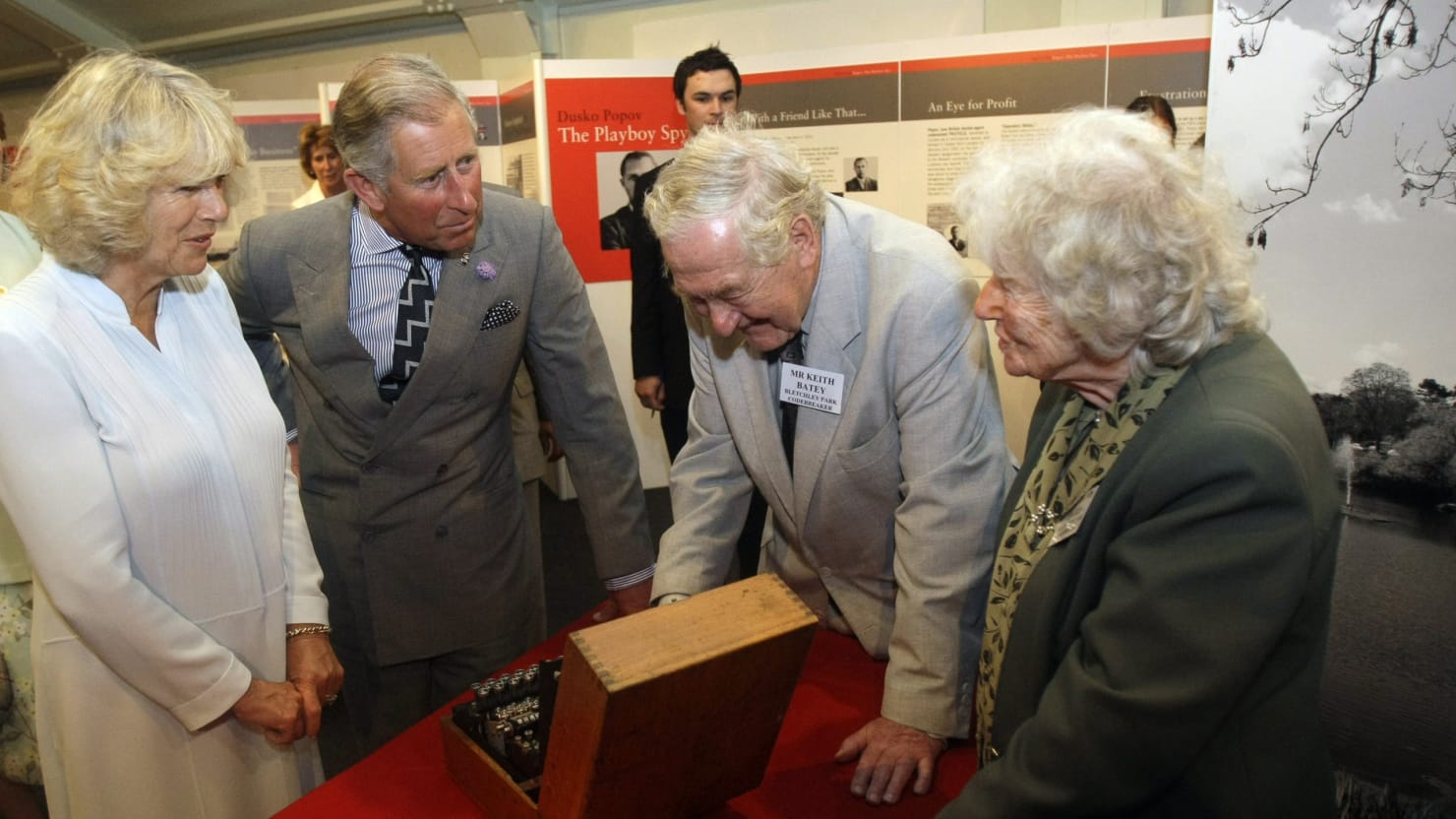
In 2009, she wrote a book about her wartime boss, Dilly Knox, and their collaboration. In the book titled “Dilly, the man who hacked Enigma” (Dilly, The Man Who Broke Enigmas), Mavis with all the tenderness and warmth poured onto paper the biography of one of the most intriguing heroes of England in World War II.
Kate died at the age of 91. After an interesting and rich secrets of life, Mavis died November 12, 2013 at the age of 92 years.
Margaret Alice Rock was born on July 7th in the distant 1903. Rock attended the Edmonton Elementary School. Her father, Frank, served in the Royal Navy, was a surgeon, Alice's mother raised children - Margaret and her son. In 1917, the family moved to London. Soon the father died in the service.
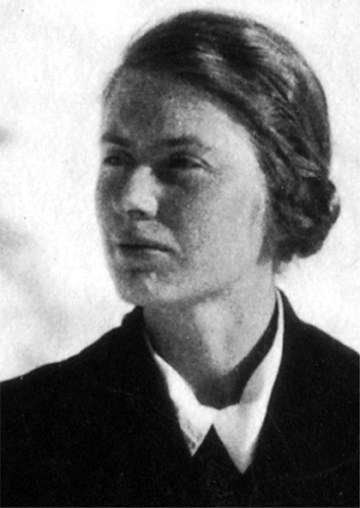
Rock attended a female private boarding school. Later, Margaret went to study at Bedford University, studied mathematics. She was a talented mathematician, in 1939 the girl went to work in Bletchley Park. The Ministry of Foreign Affairs believed that the university trained the best future cryptographers. The Victorian mansion and the vast territory of Bletchley Park became home to a young woman. At that time she was already 36 years old.
Margaret, like Mavis, began working under the command of Dilly Knox. At first, his department consisted of ten people, including “two stars” of young women, Margaret and Mavis. The girl never saw the Enigma machine, but had to break it. As Margret recalled: it reminded you of driving when you don't even have an idea about what is under the hood.
Knox himself admitted that he enjoyed working with women. According to Sinclair McKay, author of The Secret Life of Bletchley Park (2010): "Dilly Knox ... acknowledged that women are prone to lateral thinking, and at the same time have attention to detail." Such qualities were simply necessary for the successful work of code crackers.
Dilly was so impressed with his "girls" Margaret Rock and Mavis Batey that in August 1940 he contacted the head office with a statement that Lever (Beyti) was the most capable and the most useful, and Miss Rock ranked 4 or 5 in the whole state "Crackers" Enigma on the benefits of the case. Knox compared Margaret's mental abilities to professorships and demanded wages for her at a level. As a result, she received the highest score and title of linguist. Her salary was 3 pounds and 15 shillings a week.
As mentioned above, she and Mavis were able to reconstruct Enigma, which was used in the German military intelligence Abwehr. Young and attractive girls managed to read the Abwehr encryption.
From 1945 to 1963 Margaret continued to work at Bletchley Park, deciphering the secret messages. In 1963, the woman resigned. In 1983, Margrethe Rock died.
Such is the story of the life of “secret” people who influenced the course of history. Their sharp minds, devotion to Bletchley Park, clearly did not go unnoticed, and brought them to the rank of extraordinary.

Thank you for staying with us. Do you like our articles? Want to see more interesting materials? Support us by placing an order or recommending to friends, 30% discount for Habr's users on a unique analogue of the entry-level servers that we invented for you: The whole truth about VPS (KVM) E5-2650 v4 (6 Cores) 10GB DDR4 240GB SSD 1Gbps from $ 20 or how to share the server? (Options are available with RAID1 and RAID10, up to 24 cores and up to 40GB DDR4).
VPS (KVM) E5-2650 v4 (6 Cores) 10GB DDR4 240GB SSD 1Gbps until December for free if you pay for a period of six months, you can orderhere .
Dell R730xd 2 times cheaper? Only we have 2 x Intel Dodeca-Core Xeon E5-2650v4 128GB DDR4 6x480GB SSD 1Gbps 100 TV from $ 249 in the Netherlands and the USA! Read about How to build an infrastructure building. class c using servers Dell R730xd E5-2650 v4 worth 9000 euros for a penny?
Mavis Batey - Fearless Code Burglar

In the famous secret Bletchley Park (British decoding center, famous for the discoveries of Alan Turing) worked a lot of women. The most famous of them were Joan Clark, Mavis Beity and Margaret Rock. The exploits and women's fates of these ladies are no less interesting than the secrets they have learned. Mavis Bayti (May 5, 1921 - November 12, 2013) was a British code cracker during the Second World War. She worked in the Knox intelligence service (ISK) in Bletchley Park (BP). Her name is associated with the successful operation of hacking the German encryption machine Enigma G, and the success of the day, which went down in history as "D-Day".
Mavis Lever was born on May 5, 1921 in Dulwich (UK), the daughter of a postal worker and a seamstress. She grew up in Norbury and Croydon (in the south of Greater London, 15.3 km from Charing Cross), here she attended a school for girls at a monastery (Coloma Convent girl's school). At the beginning of World War II, Mavis studied German at a university college (London).
In 1940, she was selected to work in the subdivision of the Government School of Codes and Ciphers (English Government Code and Cypher School, GC & CS), later - the Center for Government Communications (English Government Communications Headquarters, GCHQ).
Initially, the girl worked in London, here she checked the encrypted message in the "Times" ad section. After taking the oath of allegiance to the service, she was selected to work in the research unit. At that time, he was headed by Dilly Knox at Bletchley Park (BP). Dilly Knox led the “Italian” section of the English Interpretation Center at BP. At the beginning of the Second World War, Dilly was 55 years old, an erudite man belonged to the cryptanalysts of the old school. In 1917, he managed to crack the German naval code: he noticed that the EN digram met five times in a 70-letter coded message, suggesting that the message contains an excerpt from the poem. Knox found a poem by Schiller, from which this passage was borrowed. It was a success. In addition to his sharp mind, he was eccentric:
Knox, for example, at the wheel of a car loved to read verses aloud and threw the wheel to accompany the recitation with suitable gestures. Approaching the intersection, instead of slowing down, he added gas, because he believed that during a fast ride the chance of hitting the obstacle was less than at a slow one. In addition, he often took with him an ax with which he cut branches on the trees that met along the way. Knox's walks on a motorcycle were just as dangerous as they were on a car ... Often, Knox’s colleagues saw Knox walking around Bletchley Park in a bathrobe, because when he left his home he was not always aware that he was not dressed properly.
Knox's weakness was women, especially young and pretty, he loved to surround himself with beauty. Well, Mavis Lever, who entered the service at BP from the University of London, has become the favorite of this genius. There were bad rumors about her: the girl helped the Jewish refugees from Germany find refuge in England, by the way, two such refugees were actually German spies. This fact did not worry Knox much, and Mavis successfully occupied the ranks of Bletchley Park employees.

Dilly Knox (July 23, 1884 - February 27, 1943)
An interesting girl who was fond of literature with lyric poetry, attracted Knox despite significant age difference. And although their relationship always remained platonic - they were close to each other, mutual understanding and respect reigned between them.
She was only 19 years old when she first crossed the threshold of Bletchley Park (BP). Shortly thereafter, in March 1941, her career path was crowned with tremendous success: she cracked the Italian naval Enigma. With the help of the “fittings”, the girl managed to guess a few letters that were later put into the phrase: PERSONALE PER SIGNOR, this allowed Lever to understand the order of the disks in Enigma and, accordingly, to crack the one-time key to it. About the reinforcement method:
This method got its name when English cryptanalysts began to compile tables in order to fix and visually display the path that the electric current made while passing through Enigma disks. The rows of these tables were usually recorded on long strips of cardboard, which the British called “armature”. "Reinforcement" was considered in Bletchley Park to be the best method for hacking Enigma modifications that did not use a patch panel.
With the help of “fixtures”, cryptoanalysts first determined the order of the disks, and then their initial state, which allowed reading all the messages intercepted in 24 hours. It was vital to victory in the battle of Cape Matapan.
However, her most important job was to participate in the hacking of Enigma G. A special version of Enigma, which was used by the German Abwehr and was considered indestructible. At first glance, the Enigma G looked the same as the Enigma D: the same dimensions, four coding wheels, and shiny metal parts. The extreme right three wheels are coding wheels, one reflector on the left. The reflector moved during encryption, a counter was set to the left of the wheels (Zählwerk).

Mavis Lever and another girl, Margaret Rock, were able to reconstruct a modification of the Enigma, which was used by the German military intelligence (Abwehr). In early December, they managed to read the first Abwehr encryption, after which many others followed. It was possible to recruit German spies, with the help of which a radio game was conducted in the interests of the British counterintelligence. The read encryption allowed to accurately assess the progress of operations.

In Bletchley Park, Mavis met her future husband, Keita Beity, a mathematician from section number 6. They got married during the war. November 12, 2013 Mavis died at the age of 92 years after a long and interesting life. Her husband Kate, with whom they had three children, died in 2010 at the age of 91.
Bletchley Park
In 1937, Dilly Knox hacked into the commercial version of Enigma, and in 1939 he was one of those who were the driving force in the creation and formation of Bletchley Park. By the time Mavis joined the BP, the “code thieves” of the Hut 6 section had already read the ciphers of the German army and air force.

19-year-old Mavis first met Knox, eccentric and absent-minded, the first thing she heard was: “Oh, hi, are we breaking into cars, do you have a pencil?” That's all. She was never told what to do, how to do it, everything needed to learn by herself. In principle, this is how it worked in Bletchley. Lever learned to disassemble the erratic notes of her boss, which he made with the help of an unsubaid pencil. At the same time, the girl realized that she could learn a lot from her mentor Knox. Do not forget that at the same time in the BP Alan Turing worked on hacking Enigma.
The first task of the girl was the work on hacking the Italian Enigma code. In March 1941, Mavis managed to hack the system, after the German operator made a critical error when sending a test message. I would like to note that, in comparison with the German Enigma, the Italian version did not use a patch panel, and therefore it was necessary for the British to go through considerably fewer options to break it up and find key installations in the Bletchley Park. True, the Italian Enigma was used much less frequently than its German sister, respectively, and the number of intercepted encryption was much lower.
The fateful letter "L"
When Mavis worked on the test messages, she noticed that they did not contain a single letter "L". Mavis suggested that the message text was originally (before encryption) consisted of some letters L. As a result, it was possible to understand what was the purpose of the enemy operation. This helped the British naval sailors to win a historic victory over the Italians in the Mediterranean. Through the sharp mind of Mavis, her mentor Dilly Knox was noticed and received thanks:
You, Knox, are a well-known scientist in Europe and know much more about the internal structure of the German encoder than anyone else. In difficult military conditions there is a need for your last talent, although very few people are aware of this.
Fight for the Mediterranean. Fight at Cape Matapan

The naval battle, held in the period March 27-29, 1941. The Germans (March 1941) began intensively preparing for the invasion of Greece. To succeed in this operation, the Italian fleet was required to strike at British shipping between Egypt and Greece. Such strikes would put the British to supply their troops. It was possible to save and foresee all actions only thanks to the enhanced intelligence work.

Andrew Cunningham
Apparently, the Italians sent detailed reports of a planned attack on a convoy of the Royal Navy carrying cargo from Cairo to Greece. The reports provided accurate information on the number of ships and submarines involved, as well as the full schedule and dates. The British managed to intercept the secret information, thanks to the work of the BP and its "workers", among whom was Mavis Lever. The information was sent to the Admiralty in London, and transferred to Admiral Andrew Cunningham, commander of the Royal Navy. He was responsible for the Mediterranean fleet. In World War II, he was one of the most famous naval commanders of the British Navy, commanded battles against the Italian and German forces, won more than one naval battle, which became a key one. He was "a wise, strong, many beloved sea wolf, supreme commander of the naval forces."
The Italian fleet suffered a crushing defeat at Matapan, losing 3 heavy cruisers and 2 destroyers at once. Relying on the battleships and cruisers as the main strike force of the fleet and underestimating the role of aircraft carriers, the Italian command put itself in a deliberately losing position.
Andrew Cunningham even wrote a letter of gratitude to Knox: “Tell Dilly that we have won a major victory in the Mediterranean, and we owe this victory exclusively to him and his girls.” After the victory at Cape Matapan, Cunningham personally visited Bletchley Park to thank for the assistance of Knox and his team of girls, code crackers. The girls, besides being devoted to the service, were also considered a mischievous character. In the admiral's arrival, they played a cruel joke with him: he was dressed in impeccable white sea uniform, the girls surrounded Cunningham and forced him to take a few steps back, he pressed his back to the newly painted wall ... After that, they celebrated the meeting in a local pub.
More interesting ... Hacking Enigma G is considered the most significant contribution of Mavis Lever to the course of military operations, and the history of cryptography in general. As already mentioned, Enigma G was a special version of the Enigma encryption machine, used by the German secret service, the Abwehr. She was considered indestructible. Mavis Lever and Margaret Rock - was in the service of Knox - were able to reconstruct the modification of Enigma, which was used in the German military intelligence Abwehr (military intelligence and counterintelligence organ of the Weimar Republic and the Third Reich). They managed to read the Abwehr encryption, followed by others. As a result, a couple of German spies were recruited, they were forced to work on the side of the British counterintelligence, as a result, double agents greatly facilitated the process of reading the ciphers, now it was easy to evaluate the course of the operation by the Germans.


It should be mentioned that during the Second World War the Germans had spies in a number of capitals, including London. After MI5 and MI6 captured most of the spies in the UK and in the neutral capitals of Madrid and Lisbon, they successfully recruited them, and through such double agents gave false information to opponents. Such an operation is known in history as the Double-Cross (XX) system.

Enigma G was known as the 11-15-17 car. Knox and his assistants were faced with the task of hacking into Enigma G. On December 8, 1941, Mavis managed to hack a message from the Abwehr during a connection between Belgrade and Madrid. Within a few days, Mavis managed to break into another Abwehr cryptomachine, the so-called GGG. This allowed them to read high level messages. As a result, the message was deciphered and it was possible to find out the details of the upcoming Allied invasion of Pas-de-Calais. Two armored divisions were retained in the area of Calais.
Kate Bayty - husband of Mavis Lever

Chet Beyti
Mavis met her future husband in Bletchley Park and married him during the war. One night she worked alone on the evening shift, faced with a difficult problem that she could not solve herself, turned for help to the mathematicians from Hut 6. At the shift, expert Kate Bayty was on duty. Life in Bletchley proceeded "closed"; employees followed instructions in everything, even in communication with people from other departments, had no right to discuss their work. Nevertheless, Dilly did not forbid his subordinates to seek help in solving some problems with other departments of Bletchley Park.
Kate Bayty (July 4, 1919 - August 28, 2010) was a British code hacker during World War II. He worked at Bletchley Park on Hut 6, then on Intelligence Services Knox (ISK). He graduated from college at Cambridge, studied mathematics, met a student of mathematics Gordon Welchman there. Gordon Welchman, a British (later American) mathematician and cryptanalyst, led the department at Bletchley Park during World War II. Kate was recruited by him in 1940. In 1943, Keith Batey managed to crack the Enigma ciphers, as well as the ciphers of the Italian military attaches in Berlin. Unlike his wife Mavis, Kate was silent, and he did not particularly talk about her work in wartime in Bletchley.

The joint solution of the problem was the beginning of the romantic story of the Beitas, 70 years long. Mathematician from section number 6 and subordinate Knox, and their life began one for two. Although initially Knox was jealous of the girl for her passion, and tried to ward off her from Beity. But after I realized that Mavis was seriously passionate about the young man, he quit trying to separate them. In November 1942, Mavis and Kate were married. "Chef" Knox even made a pair of chic wedding gift.
In 1967, Kate Beytie became the chief financial officer of Oxford University, the couple lived on the Nuneham Park university estate. After the war, Mavis became the author of many books.

Work at Bletchley Park was classified. For more than 30 years, she and her husband Kate never talked about their work in wartime. After the revelations in the published book “The Ultra Secret”, Mavis became a public person, and they began to invite her to television shows and to film documentaries. Interviews, publications about her life and work in Bletchley Park found their audience.

In 2009, she wrote a book about her wartime boss, Dilly Knox, and their collaboration. In the book titled “Dilly, the man who hacked Enigma” (Dilly, The Man Who Broke Enigmas), Mavis with all the tenderness and warmth poured onto paper the biography of one of the most intriguing heroes of England in World War II.
Kate died at the age of 91. After an interesting and rich secrets of life, Mavis died November 12, 2013 at the age of 92 years.
Margaret Rock
Margaret Alice Rock was born on July 7th in the distant 1903. Rock attended the Edmonton Elementary School. Her father, Frank, served in the Royal Navy, was a surgeon, Alice's mother raised children - Margaret and her son. In 1917, the family moved to London. Soon the father died in the service.

Rock attended a female private boarding school. Later, Margaret went to study at Bedford University, studied mathematics. She was a talented mathematician, in 1939 the girl went to work in Bletchley Park. The Ministry of Foreign Affairs believed that the university trained the best future cryptographers. The Victorian mansion and the vast territory of Bletchley Park became home to a young woman. At that time she was already 36 years old.
Margaret, like Mavis, began working under the command of Dilly Knox. At first, his department consisted of ten people, including “two stars” of young women, Margaret and Mavis. The girl never saw the Enigma machine, but had to break it. As Margret recalled: it reminded you of driving when you don't even have an idea about what is under the hood.
Knox himself admitted that he enjoyed working with women. According to Sinclair McKay, author of The Secret Life of Bletchley Park (2010): "Dilly Knox ... acknowledged that women are prone to lateral thinking, and at the same time have attention to detail." Such qualities were simply necessary for the successful work of code crackers.
Dilly was so impressed with his "girls" Margaret Rock and Mavis Batey that in August 1940 he contacted the head office with a statement that Lever (Beyti) was the most capable and the most useful, and Miss Rock ranked 4 or 5 in the whole state "Crackers" Enigma on the benefits of the case. Knox compared Margaret's mental abilities to professorships and demanded wages for her at a level. As a result, she received the highest score and title of linguist. Her salary was 3 pounds and 15 shillings a week.
As mentioned above, she and Mavis were able to reconstruct Enigma, which was used in the German military intelligence Abwehr. Young and attractive girls managed to read the Abwehr encryption.
Knox reaffirmed his reputation as the most eccentric Enigma researcher. He engaged in the reconstruction of the encoder used by German spies ... He attributes the success achieved to the account of two young girls from among his subordinates - Miss Rock and Miss Lever and attributes this merit exclusively to them alone.
From 1945 to 1963 Margaret continued to work at Bletchley Park, deciphering the secret messages. In 1963, the woman resigned. In 1983, Margrethe Rock died.
The project could not be realized without women, - says David Kenyon, historian and researcher of the Bletchley Park Trust museum. - By 1945, more than 6,700 women worked in Bletchley and its units, which accounted for more than 75% of the total number of employees.
Such is the story of the life of “secret” people who influenced the course of history. Their sharp minds, devotion to Bletchley Park, clearly did not go unnoticed, and brought them to the rank of extraordinary.

Thank you for staying with us. Do you like our articles? Want to see more interesting materials? Support us by placing an order or recommending to friends, 30% discount for Habr's users on a unique analogue of the entry-level servers that we invented for you: The whole truth about VPS (KVM) E5-2650 v4 (6 Cores) 10GB DDR4 240GB SSD 1Gbps from $ 20 or how to share the server? (Options are available with RAID1 and RAID10, up to 24 cores and up to 40GB DDR4).
VPS (KVM) E5-2650 v4 (6 Cores) 10GB DDR4 240GB SSD 1Gbps until December for free if you pay for a period of six months, you can orderhere .
Dell R730xd 2 times cheaper? Only we have 2 x Intel Dodeca-Core Xeon E5-2650v4 128GB DDR4 6x480GB SSD 1Gbps 100 TV from $ 249 in the Netherlands and the USA! Read about How to build an infrastructure building. class c using servers Dell R730xd E5-2650 v4 worth 9000 euros for a penny?
